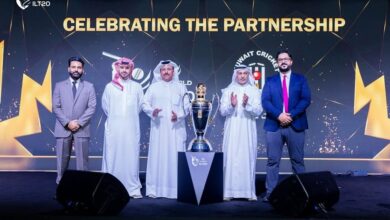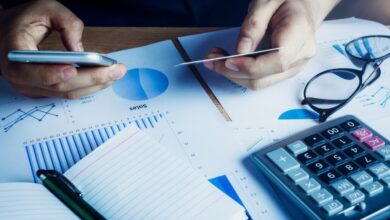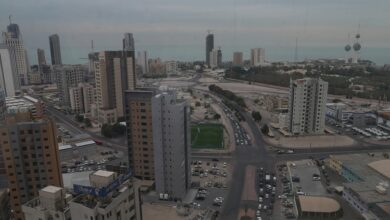
By Wilson D’cunha,
Director of PR & Communications
In the vibrant heart of Dubai Design District (d3), creativity knows no borders as Dubai Design Week 2025 unfolded its 11th edition — a global celebration where innovation meets imagination.
Bringing together over a thousand designers, architects, and creative minds from more than 50 countries, this year’s edition transforms d3 into a living canvas of ideas, dialogue, and craftsmanship.

Under the patronage of Her Highness Sheikha Latifa bint Mohammed bin Rashid Al Maktoum and and presented in strategic partnership with Dubai Design District (d3), part of TECOM Group PJSC, and supported by Dubai Culture, the event shines as a hub for artistic exchange and forward-thinking design.

From bold explorations of form and color to conversations on sustainability, inclusivity, and AI, Dubai Design Week continued to shape the future of global creativity — reaffirming the city’s role as a meeting point where art, culture, and innovation converge.
The event transformed d3 into a creative hub that encourages cultural exchange and collaboration, positioning Dubai as a global meeting point for ideas and innovation.

As part of its multidisciplinary approach, Dubai Design Week spanned architecture, interior, furniture, graphic, and experiential design, offering a platform for dialogue and experimentation.
Khadija Al Bastaki, Senior Vice President of d3, emphasized that the partnership with Dubai Design Week reinforces Dubai’s commitment to becoming a global cultural hub under the “Design Sector Strategy 2033.” She also highlighted new milestones this year, including the inaugural d3 Awards and the fifth edition of the d3 Architecture Exhibition in collaboration with the Royal Institute of British Architects’ (RIBA) Gulf Chapter.

Natasha Carella, the Director of Dubai Design Week, in an exclusive interview with The Times Kuwait shared insights into the event’s evolution, its role in shaping the regional and global design landscape, and the themes that define its spirit.
Natasha described this year’s edition as a reflection of design’s evolving role as both a creative and social force. “We’re focusing on culturally rooted work and cross-cultural exchange,” she said, underscoring the event’s commitment to fostering human-centered design.
She emphasized that Dubai Design Week is “less about defining trends and more about reaffirming design’s role as a shared language” that promotes inclusivity and global connection.

The immersive environments of Downtown Design, the region’s leading fair for high-quality and contemporary design and anchor event Dubai Design Week, further elevated the visitor experience, featuring refined spaces such as the Solaire Lounge by Veuve Clicquot and a bespoke Buccellati lounge by david/nicolas.
Downtown Design’s Forum brought together international design icons like Tom Dixon, Marcel Wanders, and Lee Broom, alongside regional leaders including Pallavi Dean and Omar Al Gurg. The “Editions Art & Design” segment showcases limited-edition works and collectible furniture by global and regional designers, while interactive installations — from AI-generated portraits to Emirati heritage reinterpretations — highlight Dubai’s fusion of innovation, tradition, and cultural diversity.
Ms Natasha calls the, “Dubai Design Week a key moment in the calendar for creative practitioners.” Natasha explained how the event provides both space and visibility for designers and architects to present their ideas. “We support them by giving access to audiences and the right environments to showcase their work. Some exhibitors build their own installations, while others collaborate with us or with external partners,” she said.
She highlighted one remarkable example from this year’s event — the Japanese Pavilion, a collaboration between architectural firm Nikken Sekkei and the Sobokuya family, traditional Japanese woodworkers renowned for building intricate wooden structures without the use of screws.
“They built the entire structure themselves within a few days,” she said. “This craftsmanship and collaboration are exactly what we aim to highlight — traditions meeting contemporary creativity.”
A Decade of Growth and the Road Ahead
Reflecting on Dubai Design Week’s journey over the past decade, Natasha noted how much the region’s creative ecosystem has matured. “Dubai’s design scene has evolved tremendously,” she observed. “We now have strong academic institutions producing the next generation of designers, cultural organizations offering incubators and mentorship, and private institutions commissioning design projects.”
She emphasized that earlier, design in the region leaned heavily on imported aesthetics. “Today, we’re witnessing authentic and innovative design emerging from Dubai and the wider region. Our goal is to platform these regional voices globally,” she said emphatically.
Looking ahead, Natasha sees Dubai Design Week continuing to play a pivotal role in global design dialogues. “AI is a major area of exploration for us,” she added. “It’s evolving rapidly, but it also raises questions about copyright and intellectual property since AI learns from existing creative work. The challenge is to keep the human at the center of creativity while integrating these technologies effectively.”
She also stressed the importance of inclusivity: “We aim to amplify voices from the Global South — from Africa to East Asia — fostering collaborations and celebrating diversity in design.”
Emerging Trends: From Minimalism to Maximalism
When asked about this year’s standout themes, Natasha observed a refreshing shift in design trends. “Globally, design has gone through a phase of minimalism and muted tones,” she said. “But this year, we’re seeing a return to maximalism — vibrant colors, ornamentation, and bold expressions. It’s exciting to see designers having fun again with form and color.”
Balancing Global Exposure and Local Talent
Natasha explained that Dubai Design Week’s concept of “local” extends beyond nationality. “Dubai is home to over 200 nationalities,” she said. “So, local talent includes everyone who contributes to the city’s creative energy. Our mission is to bring together regional and international voices — to exchange ideas, collaborate, and inspire new possibilities.”
Sustainability at the Core
Sustainability, Natasha affirmed, remains central to Dubai Design Week’s vision. “Designers in the UAE have developed over ten new eco-conscious materials, including some made from date seeds and other natural by-products,” she added.
She also highlighted Colab a materials library located at d3 and founded by Richard Wilson. “It’s the first of its kind in the region, connecting architects and designers with innovative materials from around the world to inspire sustainable design practices.”
A Vision for the Future
Following the conversation with The Times Kuwait, Natasha expressed optimism about the future of Dubai Design Week and the creative community it represents.
“Our goal,” she said with a smile, “is to continue building bridges between cultures, disciplines, and generations — because design, at its heart, is about connection.”
Dubai Design Week 2025 continues to affirm Dubai’s position as a global hub for creativity — a place where innovation meets tradition, and where the voices of diverse designers come together to shape the future of design.






























